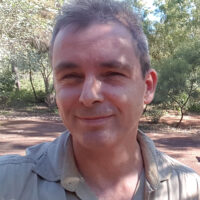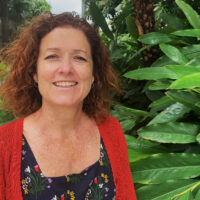Open Ecoacoustics is a set of platforms dedicated to continental-scale monitoring and management of threatened species and ecosystems in response to Australia’s biodiversity crisis. We are a part of the ARDC Machine Observation Data Processing Infrastructure. Our goal is to enable open science and conservation by promoting open access ecoacoustics technologies, methodologies, and standards. See our up-to-date project plan on ARDC Ecoacoustics Project page.

Open Ecoacoustics received investment (https://doi.org/10.3565/ts8c-ee10) from the Australian Research Data Commons (ARDC). The ARDC is enabled by the National Collaborative Research Infrastructure Strategy (NCRIS).
Our main two projects are Ecosounds and the Australian Acoustic Observatory (A2O). We organise events, talks, and educational resources for the community.
Simply put, our goal is to make sense of environmental sound, through training, tools and big data, to enable ecologists to make better decisions.
FAIR #
We support making ecoacoustic data findable, accessible, interoperable and reusable (FAIR).
Findable #
- Indexed websites
- Recogniser registry
- Machine readable metadata: REST API
- Persistent IDs in RDA
- We are working on supporting Dataset DOI’s
Accessible #
- Open-source by default for both software and A2O data
- Downloadable software and data
- Cloud-based software
- REST API
Interoperable #
- Proof of concept for interoperability with Ecocommons
- New tools, e.g. bulk download/upload features
- Ecoacoustics Metadata Utility (EMU) for metadata standardization
Reusable #
- Published workflows - case studies Ecocommons
- Open Source on GitHub
- We encourage users to supply citations in the description of their projects
Read more about FAIR data on the ARDC Website
Team #

Prof. Paul Roe
Project Leader Queensland University of TechnologyProfessor Roe is a computer scientist interested in how technology can benefit environment and community, particularly for new kinds of environmental monitoring. With a deep understanding of Australia’s fragile and mega-diverse environment, Professor Roe undertakes novel interdisciplinary research. This includes ecological acoustic monitoring systems which enable new scales of environmental monitoring through big data collection and analysis, and novel computer systems supporting communication and collaboration in remote Aboriginal communities. He leads the ARDC Open Ecoacoustics platform project which is developing an open source platform for ecoacoustic data storage, analysis, visualisation and sharing. He also leads the Australian Acoustic Observatory (A2O), a continental-scale network utilising 400 continuously operating acoustic sensors across multiple Australian ecosystems collecting 2 Petabytes of sound data over the project’s 5-year duration. Professor Roe is also a member of the Open Ecoacoustics Scientific and Technical Advisory boards.

Prof. Susan Fuller
Project Leader Queensland University of TechnologyAssociate Professor Susan Fuller is an internationally recognised researcher in ecology and conservation biology, with a focus on using acoustic technology to understand and conserve biodiversity. Her research group studies the bioacoustics of frogs and birds, particularly to better understand call evolution and speciation, but importantly to identify risks posed by anthropogenic activities (such as vegetation clearing and noise) on species persistence. Susan is leading research on threatened bird, frog and mammal species detection in the bushfire affected Gondwana WHA, but also in urban areas with her project developing ecoacoustic tools for detection of powerful owls and breeding success in the Greater Brisbane Region She also studies soundscapes and has pioneered research linking soundscape patterns to landscape fragmentation and ecological condition. Her research on bird assemblages in regrowth Mulga has important ramifications for vegetation clearing in this impacted bioregion and her current involvement in QUT’s National Landcare Smart Farms project developing acoustic technology for biodiversity monitoring on cotton farms will deliver tangible reporting outcomes for the industry. Susan is also co-leader with Prof Paul Roe of the ARDC Open Ecoacoustics Platform project. She has been elected as a Councillor on the Board of the International Society of Ecoacoustics since it’s inception in 2014 and she gained national media attention in 2016 through her involvement in an ABC Catalyst episode on soundscapes (http://www.abc.net.au/catalyst/stories/4498780.htm).Assoc. Professor Fuller is also a member of the Open Ecoacoustics Scientific and Technical Advisory boards.

Anthony Truskinger
Technical Leader Queensland University of TechnologyRead about Anthony's journey as a Research Software engineer on the ARDC Website (https://ardc.edu.au/article/shaping-research-software-an-interview-with-anthony-truskinger/).

Philip Eichinski
Senior Research Software Engineer Queensland University of Technology
Hudson Newey
Front-End Developer & Research Assistant Queensland University of TechnologyCite this web page #
Truskinger, A., Schwenke, A., Holopainen, N., Eichinski, P., & Scarpelli D. A., M. (2024). Open Ecoacoustics Website (Version 0.1) [Computer software]. https://openecoacoustics.org/